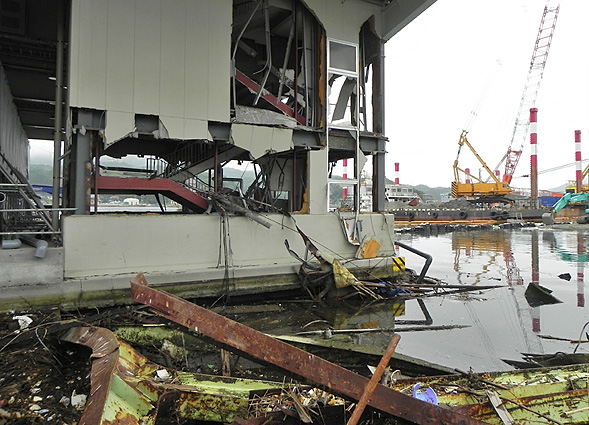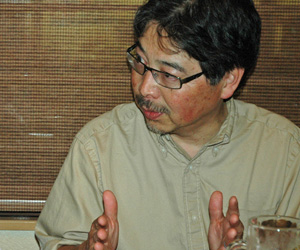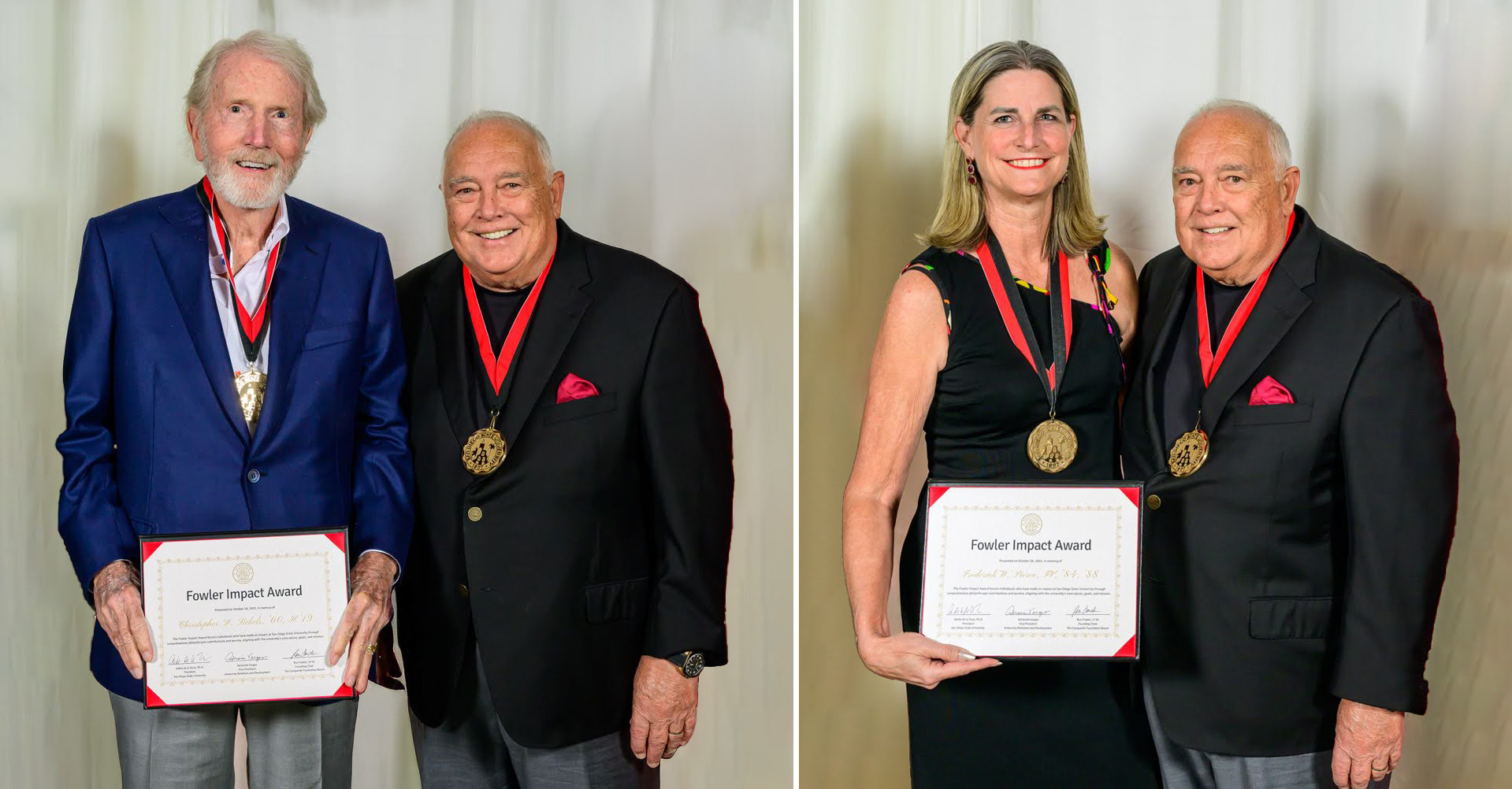The Resilience to Recover
Kotaro Nakamura's work in post-tsunami Japan yields new insights into disaster recovery.

This semester, SDSU NewsCenter will focus on the arts with stories of the creative endeavors of our students, faculty, staff and alumni.
Architect Kotaro Nakamura is no stranger to natural disasters.
He followed and researched the reconstruction process in New Orleans' Lower Ninth Ward after Hurricane Katrina and designed the reconstruction of 30 housing units at the San Pasqual Academy for Foster Youth after San Diego’s Cedar Fire destroyed parts of its campus in 2003.
But Nakamura, interim director of San Diego State University School of Art + Design, said those experiences could not prepare him for the devastation of post-tsunami Japan. Just four months after the March 2011 disaster, he visited the ravaged northeast coast of the country and found a landscape comparable to war-torn regions of Afghanistan.

School of Art and Design dean Kotaro NakamuraMost unsettling for Nakamura was the mindset of the tsunami and earthquake survivors. His personal instincts, shaped by years of experience, focused on recovering and rebuilding.
He and a number of classmates from Kanto Gakuin University shared ideas for rebuilding at a symposium in Sendai sponsored by Japan Institute of Architects and Engineers and presented to nonprofit organizations operating in the region.
“The proposals went nowhere,” Nakamura said. “They needed more than buildings.”
Loss of hope
A year later, Nakamura returned to Japan, this time with a different agenda. He interviewed tsunami survivors still housed in temporary accommodation a few miles from the coast.
Most of them were 50 or older with sons and daughters who had moved away to find work in the cities. One woman's successful travel agency was destroyed by the earthquake. She asked Nakamura why she should rebuild if there was no one to take over the business when she retired.
“I began to understand,” he said, “that these survivors had lost hope. They needed more than four walls and a roof to call home — they needed the resilience to recover.”
Developing strategies
With a grant from the SDSU President’s Leadership Fund, Nakamura launched Resilience By Design, a vehicle for developing recovery strategies for communities in crisis—from natural disasters to drug violence and crime.
Nakamura’s experience in post-tsunami Japan informs the perspective of Resilience by Design.
“The issues surrounding natural and man-made disasters are complex and require a multidisciplinary approach,” he said.
“Government officials, architects, engineers, social workers, city planners, clinical psychologists, designers, financial planners, insurance agencies, non-governmental organizations, spiritual advisors and a host of others are necessary to…help survivors piece together their lives, their families and their communities.”
“Fading Memories”
Sponsored by SDSU’s University Grants Program, Nakamura is also organizing an exhibit to tell the story of Japan’s ongoing recovery efforts. “Fading Memories” will open in mid-May at the SDSU Downtown Gallery.
“I call the exhibit ‘Fading Memories’ because our minds gradually forget the horrors of a disaster such as this,” Nakamura said. “The forgetting is a protective mechanism; It must happen so that we can move on but it also represents the survivors’ suffering that still continues today, which is often forgotten by the rest of us.”
The exhibit will include before-and-after images of Japan's disaster-scarred coastline; the top 10 designs submitted to a government competition to rebuild the city of Kesennuma; and a display of jewelry created by Nozomi Project artisans from shards of pottery damaged in the earthquake and tsunami.
Also on display will be entries from an SDSU student competition to design temporary shelters from recycled materials. The competition is sponsored by ECOR, which manufactures these materials. Company founder and CEO, Robert Noble, designed SDSU's Parma Payne Goodall Alumni Center while he was CEO of Tucker Sadler Architects.
About Kotaro Nakamura
Nakamura, a licensed California architect, is a partner in the San Diego architectural firm of Roesling Nakamura Terada.
He received an American Institute of Architects design award for his work on the reconstruction of San Pasqual Academy. Nakamura is also the architect for the redesign and expansion of the Japanese Friendship Garden in Balboa Park.
“This is more than a garden,” he said. “It represents the rebuilding of the Japanese American community in San Diego.”
Similarly, Nakamura is working to rebuild the community that is SDSU’s School of Art + Design after the retirement or impending retirement of more than a half dozen nationally recognized faculty, including Wendy Maruyama (furniture and woodworking) and Helen Shirk (jewelry and metalwork).
“It’s important to actively create and encourage experiences of common purpose that build relationships and cross-disciplinary competence, because that is also what builds resilience within any community,” he said.
“A Year of Water,” an inaugural open-studio event organized by Nakamura across the entire School of Art + Design, seems to have taken on a life of its own among the faculty and will be presented next year with the theme “A Year of Food.”
“That is what you want most — in your family, your community or your school — for people to ultimately find their own path, their own voice and build their own resilience,” Nakamura said. “The best work anyone can hope to do is to provide the right environment for growth.”


